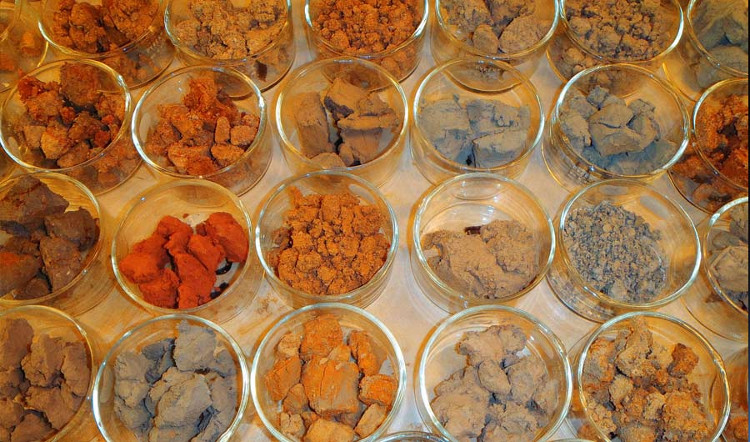Atlas of the most common bacteria in the soil
variety, however only a few of them exist much everywhere.
Each soil sample can contain hundreds to thousands of types of bacteria - most of which have yet to be determined. However, a new study has taken an important step in screening and identifying hundreds of especially and popular bacteria.

Soil samples were analyzed.(Photo: Oregon Department of Transportation (Flickr)).
Scientists analyzed soil samples from 237 locations across six continents, representing ecosystems from arid grasslands to tropical forests. Using ribosomes - genetic data from cell structures, scientists classified the bacteria into 'phylotypes' - levels similar to 'species' , but more easily identified for micro bacteria.
The top soil samples contain up to 25,000 different phylotype types, most of which are rare, can only be found in specific locations, but phylotype 511 is more common. Although only contributing about 2% of biodiversity, this phylotype accounts for 41% of the bacterial cells in the soil.
The study helped narrow the vast number of bacteria into a desirable list - according to research published in Science.
The authors believe that future studies on the genetics and ecosystems of bacteria can help shed light on the function of soil in the ecosystem. Finally, science can even predict how bacteria will react to changes in climate and soil environment.
- Find new antibiotics in ... soil
- Detection of bacteria 'eat' electrons
- Bacteria in the soil help reduce anxiety
- What is the land? How soil formed?
- Microbial enzyme technology to keep CO2 for soil
- Stunned to find bacteria in the brain
- World of bacteria - interesting things
- 'Caffeine addiction'
- Mars soil may have live bacteria
- New antibiotic discovered in tropical forest
- There is a world of creatures living under our feet
- Butterflies disguising themselves as tigers threaten enemies terribly
 Why do potatoes have eyes?
Why do potatoes have eyes? 'Tragedy' the world's largest carnivorous life: Death becomes ... public toilet
'Tragedy' the world's largest carnivorous life: Death becomes ... public toilet Tomatoes were once considered 'poisonous' for 200 years
Tomatoes were once considered 'poisonous' for 200 years Detecting microscopic parasites on human face
Detecting microscopic parasites on human face